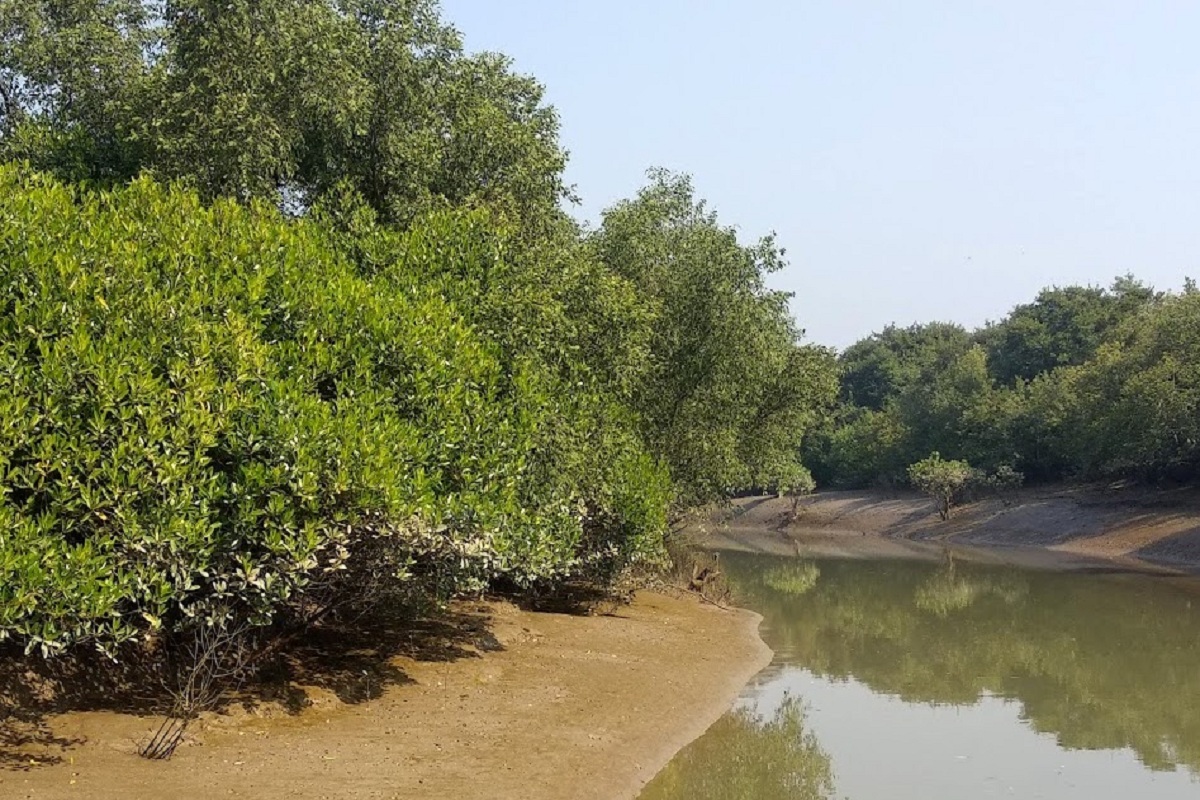Odisha villagers pin hopes of mangrove saving them from cyclone Dana’s fury
The State Forest Department has in the meanwhile kept the national park out of bounds for tourists from 23 to 25 October in view of the cyclone warning.
India’s mangroves, particularly the Sundarbans, play a critical role in stabilising coastlines, supporting diverse species and mitigating climate change effects.

Photo: IANS
Mangrove forests, a unique and vital ecosystem, line India’s 7,500-kilometre coastline, offering immense ecological, economic and environmental benefits. These forests, found in the intertidal regions where freshwater and saltwater mix, are characterised by salt-tolerant plants capable of thriving in harsh conditions. India’s mangroves, particularly the Sundarbans, play a critical role in stabilising coastlines, supporting diverse species and mitigating climate change effects.
Mangroves are crucial for coastal protection. Their dense root systems stabilise shorelines, preventing erosion caused by waves and tides. These roots also act as natural barriers, reducing the impact of storm surges and tsunamis. This protective function is especially vital for densely populated coastal regions, safeguarding lives and property during extreme weather events.
Advertisement
Beyond physical protection, mangroves enhance water quality. Their intricate root systems filter pollutants, including nitrates and phosphates, from the water, thus maintaining healthier coastal and marine ecosystems. Additionally, mangroves are significant carbon sinks, capturing and storing large amounts of carbon dioxide, termed “blue carbon”, which is essential in the fight against climate change.
Advertisement
Mangroves are biodiversity hotspots, providing essential habitats for various species, including fish, crustaceans, birds, and mammals. The Sundarbans, for instance, host the iconic Bengal tiger, estuarine crocodiles, and Gangetic dolphins. These forests are also critical breeding grounds for many marine species. Juvenile fish, shrimp, and crabs find refuge among mangrove roots, which support the livelihoods of coastal fishing communities by sustaining fish stocks.
Bird species such as egrets, herons, and kingfishers rely on mangroves for nesting and roosting. Endangered species, including the smalltooth sawfish and hawksbill sea turtle, also depend on these habitats.
Different types of mangroves exist, including red, black, and white varieties. Red mangroves are typically found along coastlines, while black mangroves are identified by their dark bark and better access to oxygen. White mangroves, on the other hand, tend to grow at higher elevations compared to red and black mangroves. In India, major mangrove areas include the Sundarban Mangroves, Mahanadi Mangroves, Mangroves of Gujarat, Ratnagiri Mangroves, Goa Mangroves, Cauvery Deltaic Mangroves, Krishna-Godavari Mangroves and Andaman Nicobar Mangroves.
Despite their significance, mangrove forests face numerous threats. Human activities such as coastal development, aquaculture and deforestation have led to significant habitat loss. In India, urbanisation and industrial activities encroach on mangrove areas, disrupting these ecosystems. The conversion of mangroves into shrimp farms is a major issue, contributing to approximately 35 per cent of global mangrove loss.
Pollution, such as oil spills and plastic waste, worsens mangrove habitats. Climate change, with rising sea levels and stronger storms, adds to their challenges. Mangroves struggle to adapt fast, urging urgent conservation.
Essential measures include reforestation, community-based programmes engaging locals, and awareness campaigns. Legal protections are vital, designating mangroves as protected zones and fostering international cooperation for shared areas like the Sundarbans.
Mangrove forests are indispensable to India’s coastal ecology, offering protection, supporting biodiversity, and combating climate change. Effective conservation is crucial for coastal well-being, emphasising mangroves‘ significance as more than just trees but vital coastal lifelines deserving the utmost care.
The writer is an environment enthusiast and an animal welfare activist, and is the Founder of Kaloms Ideas Welfare Foundation. She is also a chartered accountant.
Advertisement